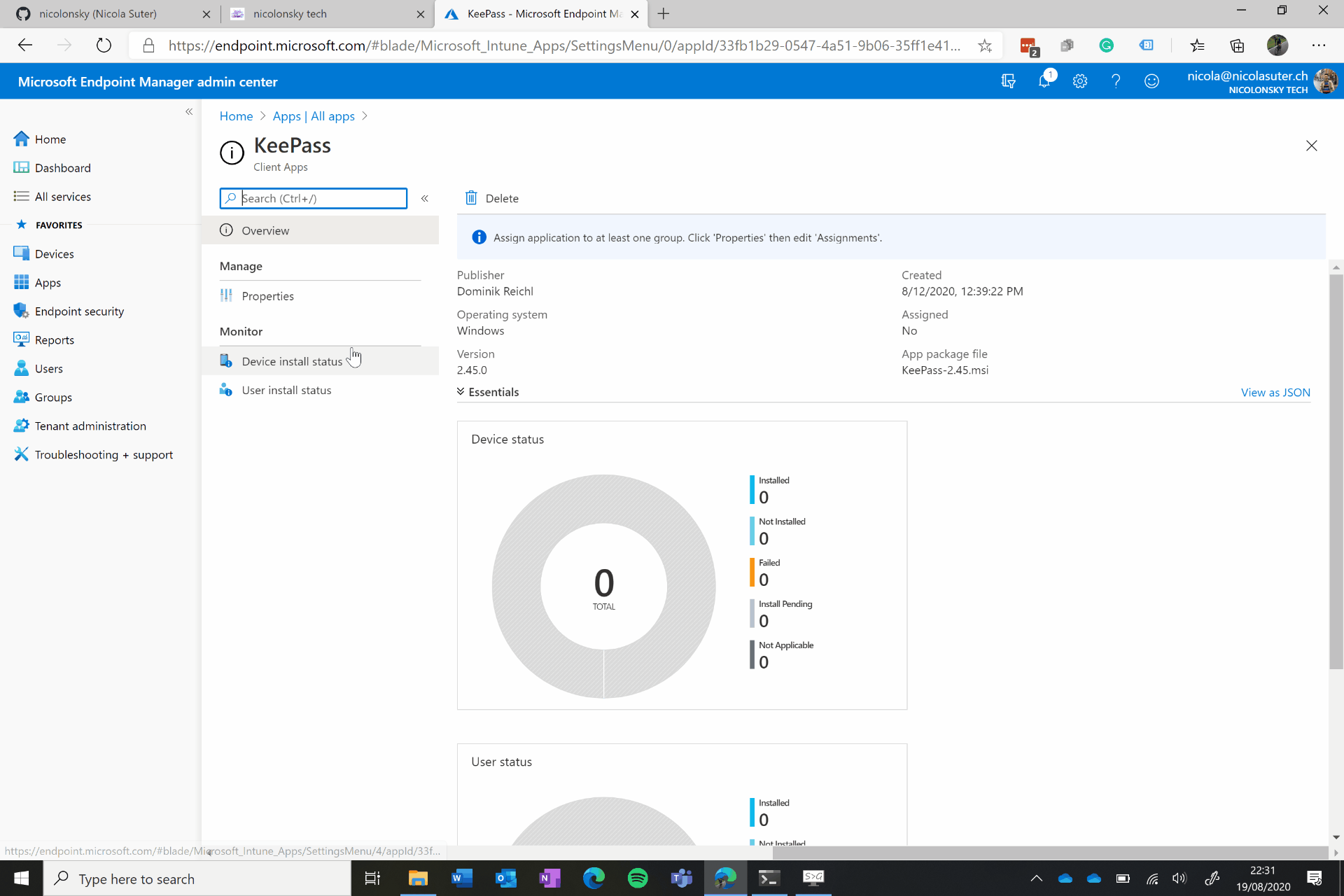Intune is commonly used alongside AD CS, an on-prem PKI that can be expensive, makes certificate management difficult in the long run, and limits your organization from operating in the cloud. SecureW2 is vendor-neutral and can easily support Intune with all APs and RADIUS servers. R/Intune: Intune is a Mobile Device Management service that is part of Microsoft's Enterprise Mobility + Security offering. Don't call it InTune.
Microsoft Intune is a cloud-based service that focuses on mobile device management (MDM) and mobile application management (MAM). You control how your organization’s devices are used, including mobile phones, tablets, and laptops. You can also configure specific policies to control applications. For example, you can prevent emails from being sent to people outside your organization. Intune also allows people in your organization to use their personal devices for school or work. On personal devices, Intune helps make sure your organization data stays protected, and can isolate organization data from personal data.
What is Microsoft Azure Intune? A mobile devices cloud base management tool, which helps organization to manage their mobile devices and PC’s anytime from anywhere. It provide easier access to applications and resources Anytime from Any Mobile device they want. It is: One of Microsoft Cloud Services to Manage & Secure PCS and Devices Anywhere. How to manage Firefox Enterprise with Microsoft Endpoint Manager (Intune). To continue to Microsoft Azure. Email, phone, or Skype.
Intune is part of Microsoft's Enterprise Mobility + Security (EMS) suite. Intune integrates with Azure Active Directory (Azure AD) to control who has access, and what they can access. It also integrates with Azure Information Protection for data protection. It can be used with the Microsoft 365 suite of products. For example, you can deploy Microsoft Teams, OneNote, and other Microsoft 365 apps to devices. This feature enables people in your organization to be productive on all of their devices, while keeping your organization’s information protected with policies you create.
With Intune, you can:
- Choose to be 100% cloud with Intune, or be co-managed with Configuration Manager and Intune.
- Set rules and configure settings on personal and organization-owned devices to access data and networks.
- Deploy and authenticate apps on devices -- on-premises and mobile.
- Protect your company information by controlling the way users access and share information.
- Be sure devices and apps are compliant with your security requirements.
Manage devices
In Intune, you manage devices using an approach that's right for you. For organization-owned devices, you may want full control on the devices, including settings, features, and security. In this approach, devices and users of these devices 'enroll' in Intune. Once enrolled, they receive your rules and settings through policies configured in Intune. For example, you can set password and PIN requirements, create a VPN connection, set up threat protection, and more.
For personal devices, or bring-your-own devices (BYOD), users may not want their organization administrators to have full control. In this approach, give users options. For example, users enroll their devices if they want full access to your organization resources. Or, if these users only want access to email or Microsoft Teams, then use app protection policies that require multi-factor authentication (MFA) to use these apps.
When devices are enrolled and managed in Intune, administrators can:
- See the devices enrolled, and get an inventory of devices accessing organization resources.
- Configure devices so they meet your security and health standards. For example, you probably want to block jailbroken devices.
- Push certificates to devices so users can easily access your Wi-Fi network, or use a VPN to connect to your network.
- See reports on users and devices that are compliant, and not compliant.
- Remove organization data if a device is lost, stolen, or not used anymore.
Online resources:
Try the interactive guide

The Manage devices with Microsoft Endpoint Manager interactive guide steps you through the Microsoft Endpoint Manager admin center to show you how to manage and protect mobile and desktop applications.
Manage apps
Mobile application management (MAM) in Intune is designed to protect organization data at the application level, including custom apps and store apps. App management can be used on organization-owned devices, and personal devices.
When apps are managed in Intune, administrators can:
- Add and assign mobile apps to user groups and devices, including users in specific groups, devices in specific groups, and more.
- Configure apps to start or run with specific settings enabled, and update existing apps already on the device.
- See reports on which apps are used, and track their usage.
- Do a selective wipe by removing only organization data from apps.

One way that Intune provides mobile app security is through app protection policies. App protection policies:
- Use Azure AD identity to isolate organization data from personal data. So personal information is isolated from organizational IT awareness. Data accessed using organization credentials are given additional security protection.
- Help secure access on personal devices by restricting actions users can take, such as copy-and-paste, save, and view.
- Can be created and deployed on devices that are enrolled in Intune, enrolled in another MDM service, or not enrolled in any MDM service. On enrolled devices, app protection policies can add an extra layer of protection.
For example, a user signs in to a device with their organization credentials. Their organization identity allows access to data that's denied to their personal identity. As that organization data is used, app protection policies control how the data is saved and shared. When users sign in with their personal identity, those same protections aren't applied. In this way, IT has control of organization data, while end users maintain control and privacy over their personal data.
And, you can use Intune with the other services in EMS. This feature provides your organization mobile app security beyond what's included with the operating system and any apps. Apps managed with EMS have access to a broader set of mobile app and data protection features.
Compliance and conditional access
Intune integrates with Azure AD to enable a broad set of access control scenarios. For example, require mobile devices be compliant with organization standards defined in Intune before accessing network resources, such as email or SharePoint. Likewise, you can lock down services so they're only available to a specific set of mobile apps. For example, you can lock down Exchange Online so it's only accessed by Outlook or Outlook Mobile.
Endpoint Configuration Manager
Online resources:
How to get Intune
How To Use Microsoft Intune
Intune is available:
- As a stand-alone Azure service
- Included with Microsoft 365 and Microsoft 365 government
- As Mobile Device Management in Microsoft 365, which consists of some limited Intune features
Intune is used in many sectors, including government, education, kiosk or dedicated device for manufacturing and retail, and more.
Next steps
- Read some of the common business problems that Intune helps solve.
- Start with a 30-day trial of Intune.
- Plan your migration to Intune.
- Using your free trial or subscription, step through the Quickstart: Create an email device profile for iOS.
- Deliver and maintain services, like tracking outages and protecting against spam, fraud, and abuse
- Measure audience engagement and site statistics to understand how our services are used
Intune Definition
If you agree, we’ll also use cookies and data to:- Improve the quality of our services and develop new ones
- Deliver and measure the effectiveness of ads
- Show personalized content, depending on your settings
- Show personalized or generic ads, depending on your settings, on Google and across the web
Intune Sign In
Click “Customize” to review options, including controls to reject the use of cookies for personalization and information about browser-level controls to reject some or all cookies for other uses. You can also visit g.co/privacytools anytime.
